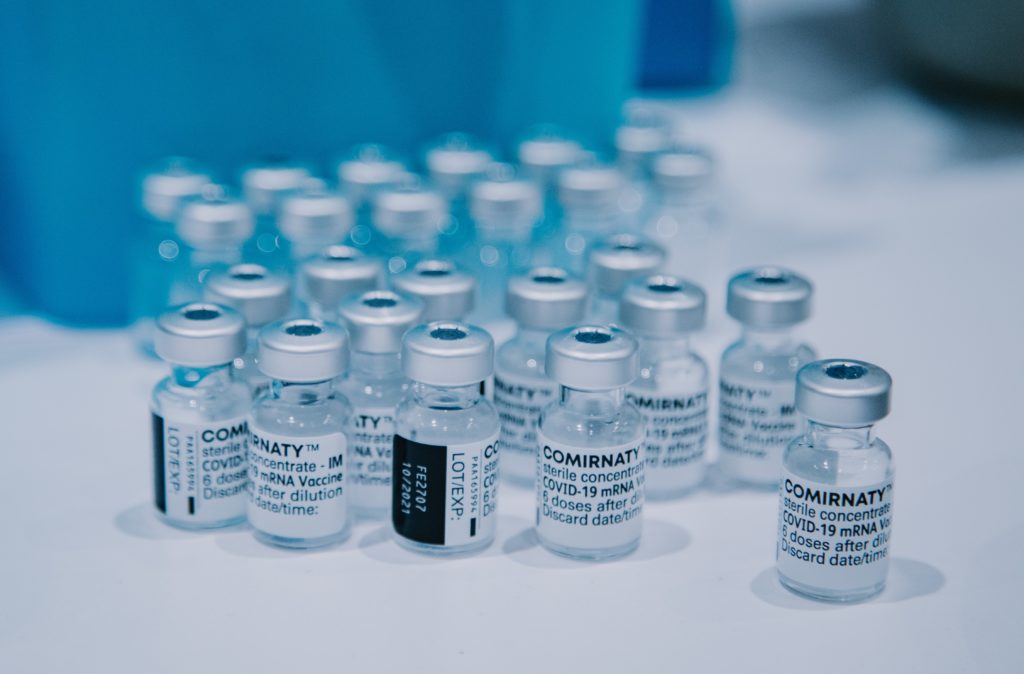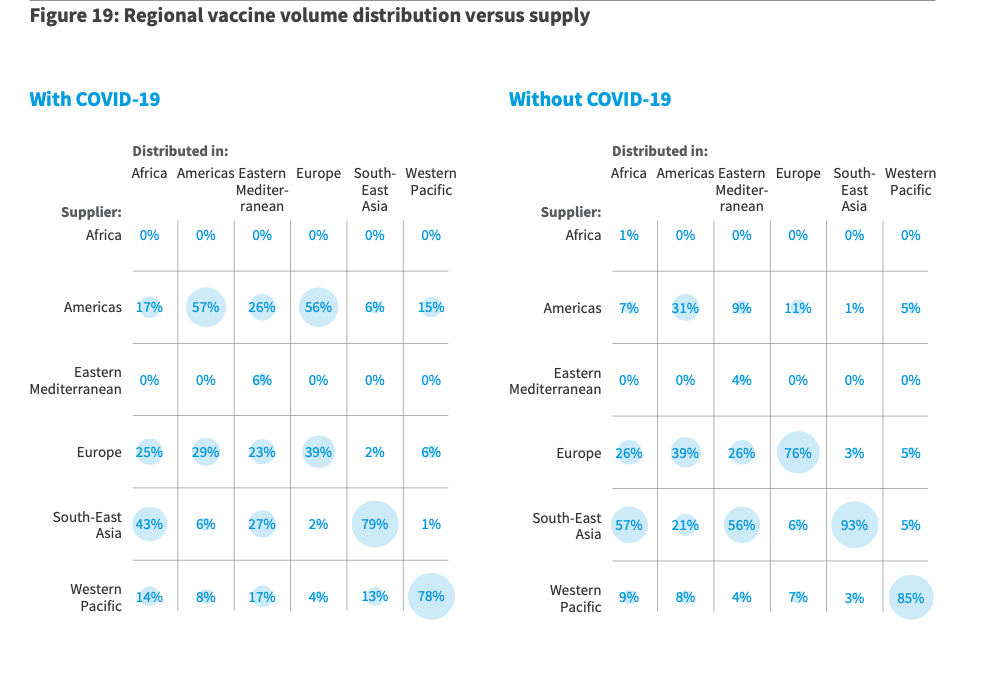
The World Health Organization (WHO) has urged governments worldwide to step up the supervision of vaccine manufacture and distribution, especially when public funding is used in vaccine R&D or manufacture, so as to prioritise essential vaccines and ensure they are distributed equitably.
The global health agency’s call to governments came as it released its annual Vaccine Market Report on Wednesday. It also pressed for countries to agree on stronger rules for the more equitable global distribution of vaccines.
“WHO is calling on governments around the world to expand research and manufacturing outside its traditional centers to increase investment in an oversight of vaccine manufacturing and distribution, especially for vaccines that are developed with public funds, and to agree on rules to collaborate on sharing vaccines equitably when demand is high,” said Dr Tedros Adhanom Ghebreyesus, director-general of WHO, speaking about the report at a press conference on Wednesday.
The 2022 annual report is the first report to include the impact of Covid-19 pandemic on the global vaccine production and supply chain. The report is also viewed as a guiding tool to achieve the WHO’s goals of the Immunization Agenda 2030 that was adopted at the World Health Assembly 2021.
The Immunization Agenda 2030 targets to save 50 million lives over the next decade by improving access to vaccines to everyone across the world.
Governments need to invest and bear risks
“Diseases such as hookworm, schistosomiasis and leishmaniasis, and pathogens prioritized by the WHO R&D Blueprint, such as Zika, Lassa fever, Nipah and henipaviral diseases, Rift Valley fever, Crimean–Congo haemorrhagic fever and filoviruses, are still missing a vaccine,” the report stated.
Vaccine manufacturing involves heavy investments upfront with high risks, the report noted. The profits that vaccines bring are also less than that brought in by other pharmaceutical products. In an attempt to mitigate these barriers, the report urges governments topport measures that prime the market, such as ¨investing in new vaccine technologies, regional research and development and manufacturing hubs, and by enabling regulatory harmonization.”
Distributed supply is key
Although WHO has a repertoire of over 90 approved vaccine manufacturers across the world, a large chunk of the supply is concentrated in the hands of just 10 manufacturers, the global health agency noted. Around 70% of the vaccine doses come from these manufacturers. When it comes to individual vaccines, often, the supply may be concentrated in the hands of just two or three manufacturers, the report notes. The resulting market concentration has led to supply shortages, as seen in the response to recent emergencies such as monkeypox or cholera. In the case of the latter, vaccine shortages recently led to WHO´s recommendation in October to ration supplies by administering only one vaccine dose, as compared to two.
“Each of the human papillomavirus, pneumo- coccal conjugate and measles, mumps and rubella combination vaccines is used by at least 100 countries, but each market is highly dependent on one or two manufacturers that account for more than 80% of vaccines by volume,” the report added.
In the case of COVID vaccines, vaccine distribution was also mostly focused in the regions where particular vaccines were produced, the report notes. As a result, regions without vaccine manufacturing capacity were left dependent on other regions to cater to their demands, often belatedly.

So despite the fact that COVID vaccines were developed and manufactured in record time, parts of the world were left without access to vaccines for many months, since the technology and the production was centered in limited number of companies and countries, the report found. To remedy that, WHO called upon governments to strategically and aggressively invest in more vaccine manufacturing capacity for the future. The report also urged governments to define principles and establish rules for collaboration, especially on intellectual property and sharing of raw materials.
The report also urged countries to explore more pooled procurement options with other countries in their region, as compared to relying only upon national mechanisms.
“Compared to self-procurement, pooled procurement attains lower prices for 14 of the 18 vaccines most widely used in middle-income countries, the average price for all 18 vaccines combined being 42% lower, although differences vary significantly for individual vaccines,” the report found.
WHO also called on the vaccine industry to align their research and development activities more closely with the WHO´s priority pathogen list and target product profiles, and to ensure there is transparency in their value chain.
Free-market dynamics don’t work
A stark feature of this edition of the Vaccine Market Report is the emphasis on the need for governments to keep public welfare in mind when dealing with the vaccine value chain.
Invoking the fact of vaccine disparities between wealthier countries and low and middle income countries during the Covid-19, relying primarily on market dynamics in vaccine distribution does not promote global public health goals, the report states.
“We must acknowledge both that vaccines are under-invested and that free market dynamics do not optimize for social and health impact.”
Pointing out that the WHO-supported COVAX vaccine facility´s share in the total quantity of vaccines procured and distributed globally only 12%, the report emphasized that globally-managed financing and procurement efforts alone are not enough to ensure that vaccines reach everyone in all the corners of the world. In October, COVAX was criticised as having been too ambitious” in an independent evaluation of its performance as part of the WHO-supported Access to Covid-19 Tools Accelerator (ACT-A).
“Despite the impressive number of approximately 15 billion doses delivered globally through various mechanisms as of October 2022, COVAX accounted for only 12% of this volume, indicating that serving all populations more equitably and ending future pandemics requires more than financing and procurement efforts.”
“The right to health means the right to vaccines,” Dr Tedros added.
Image Credits: Photo by Mat Napo on Unsplash, World Health Organization.
Combat the infodemic in health information and support health policy reporting from the global South. Our growing network of journalists in Africa, Asia, Geneva and New York connect the dots between regional realities and the big global debates, with evidence-based, open access news and analysis. To make a personal or organisational contribution click here on PayPal.
Bagikan Berita Ini














0 Response to "WHO Urges Governments To Increase Oversight On Equitable Vaccine Manufacture And Distribution - Health Policy Watch"
Post a Comment